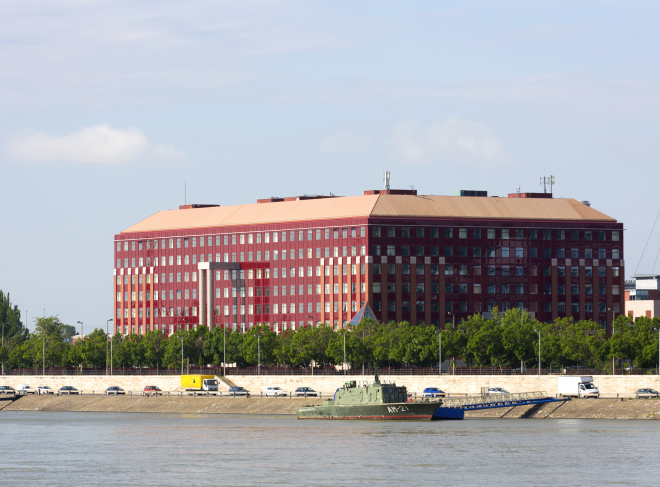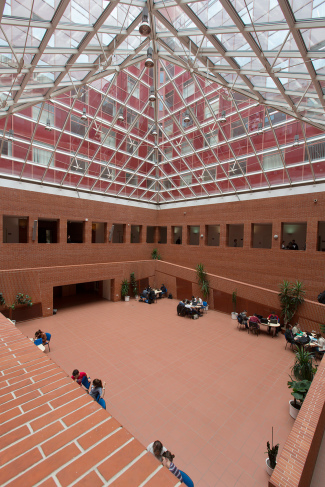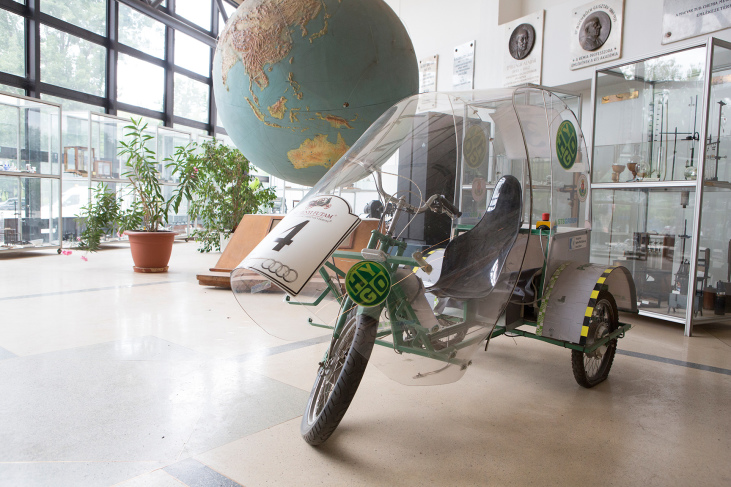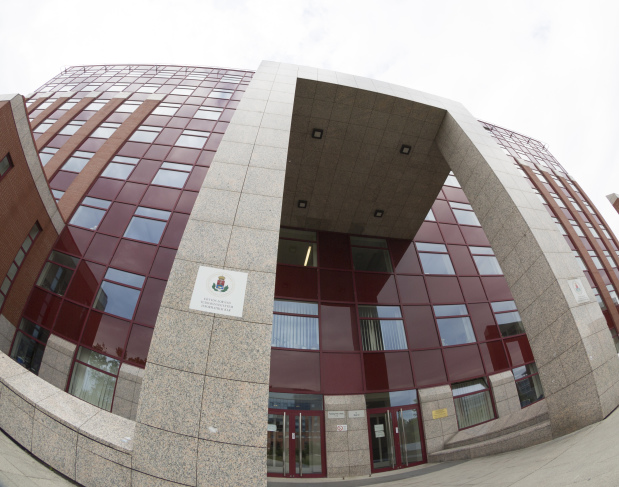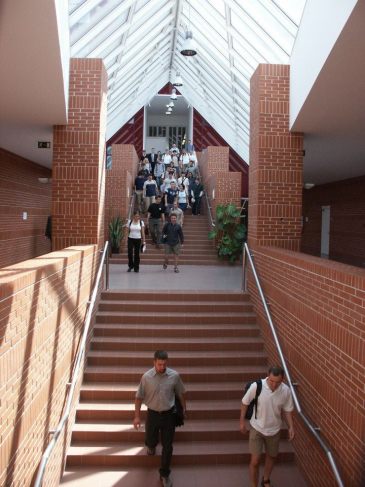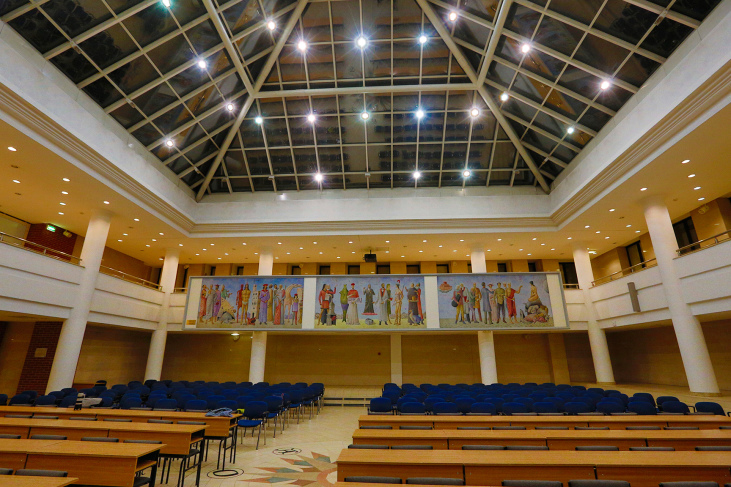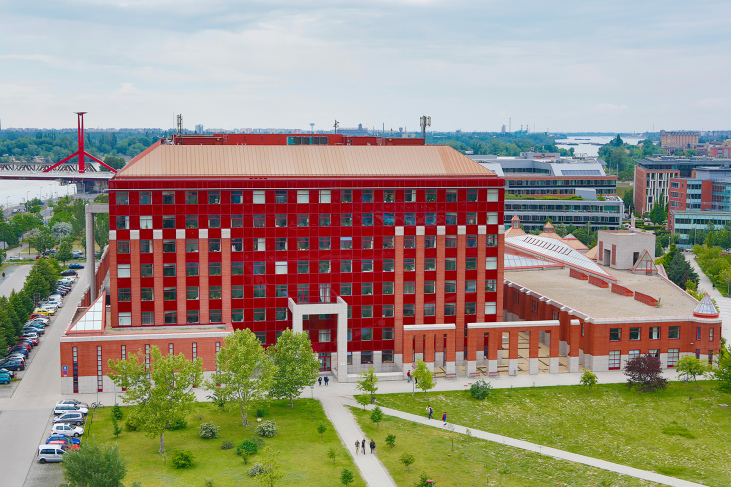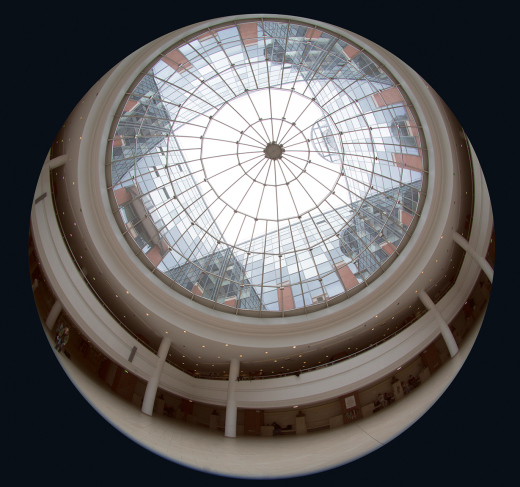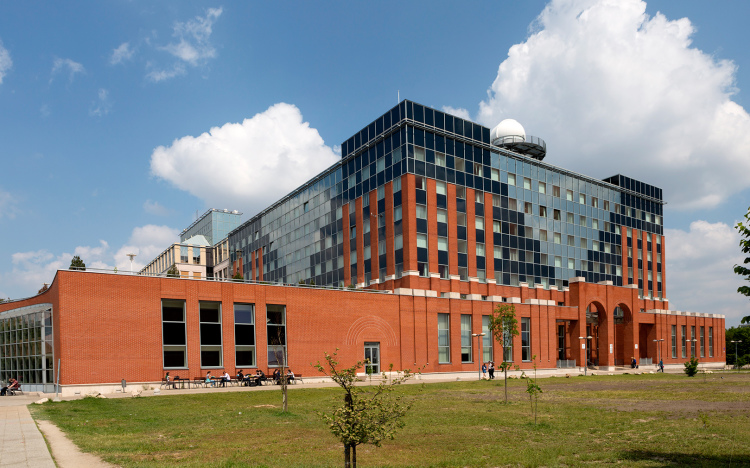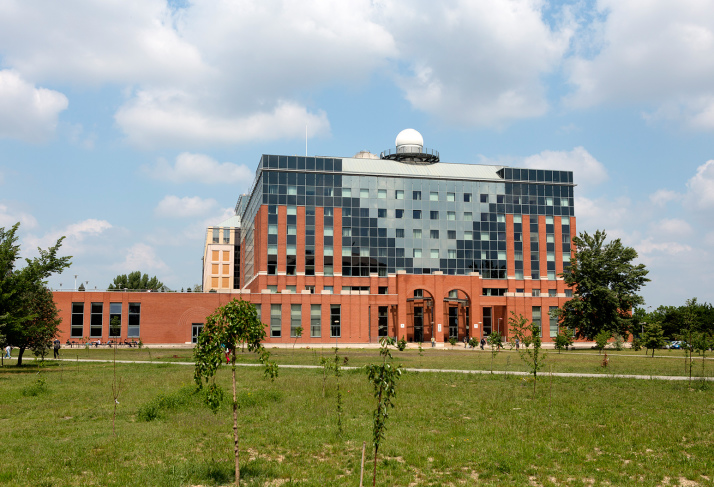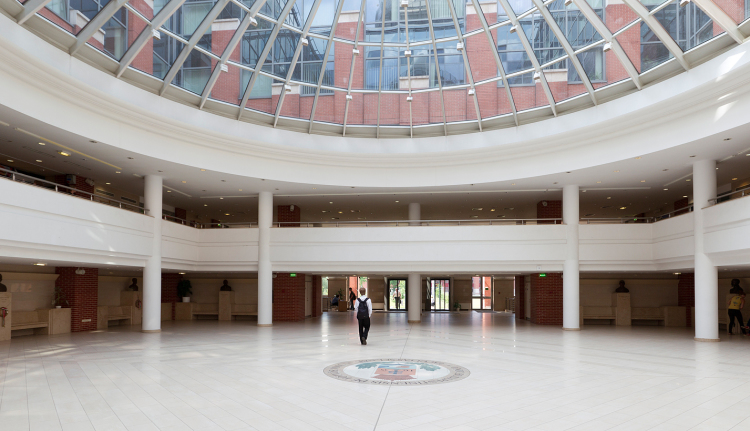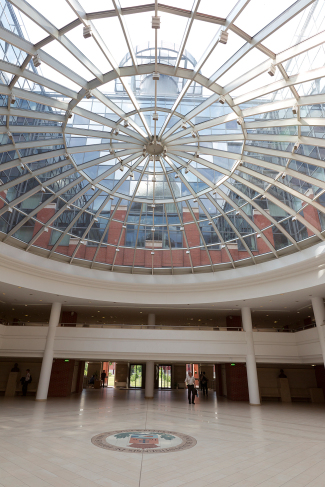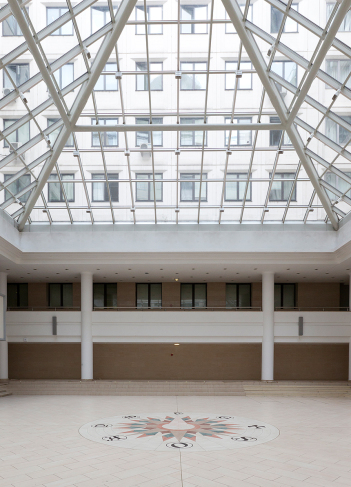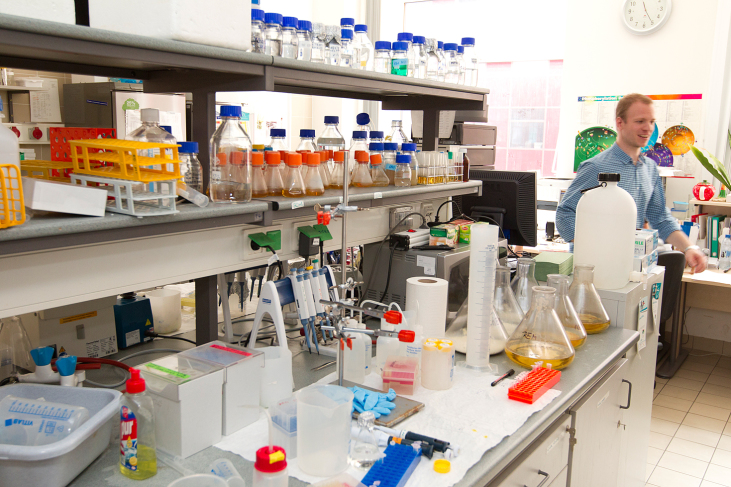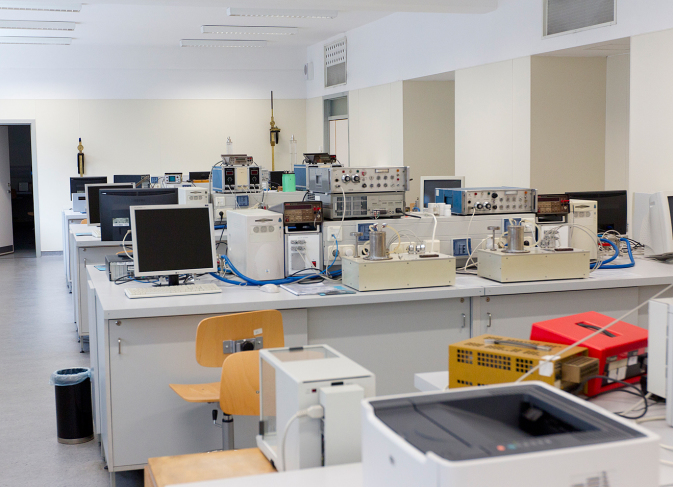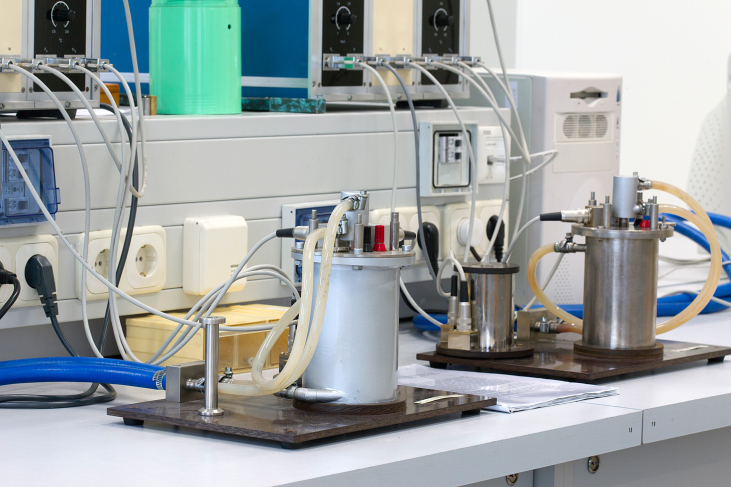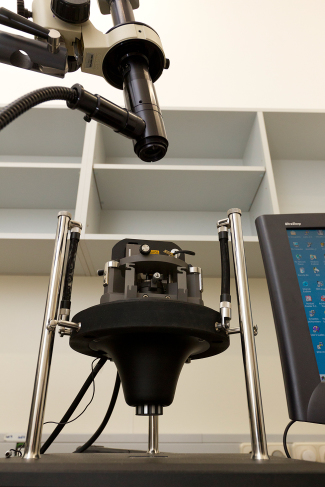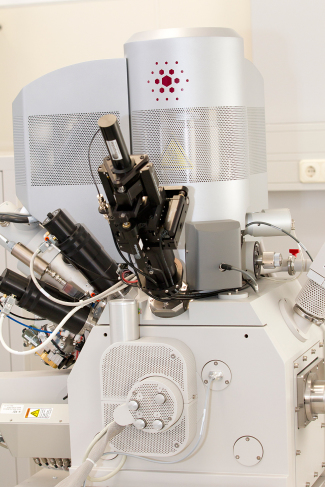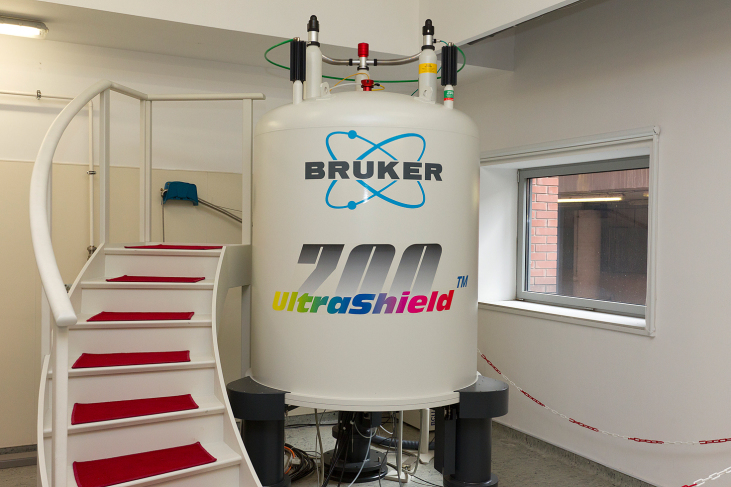Astronomy MSc
Astronomy MSc
Astronomer
Degree program
Master
FF/1440-3/2015
Institute of Geography and Earth Sciences
Department of Astronomy
Center of Earth Sciences
English
4 semesters (2 years)
120
5
20
The objective of the Astronomy Master's Degree Program is to provide a comprehensive knowledge of astronomy including related interdisciplinary areas. Students will also acquire competencies in the wider field of scientific research, in the use of technical language, in team work and in the communication of scientific results, they will also develop an ability to resolve novel or unusual problems arising in a multidisciplinary context.
The objective of the Astronomy MSc programme is the formation of fully trained astronomers and astrophysicists capable of supervised observational and theoretical research in astronomy and related fields.
Our training extends to interdisciplinary areas overlapping with astronomy such as space physics or planetology. The training programme is built upon a set of courses providing a solid theoretical knowledge in astrophysics, celestial mechanics and galactic dynamics. Solar system studies as well as the use and processing of observational satellite data are given special attention during the training. Opportunities to develop students' observing skills are offered in our regular courses held at our own campus observatory equipped with a 40-cm RCC telescope, as well as at Hungary's prime astronomical observatory at Piszkéstető. The range of educational technology at our disposal also includes a digital planetarium. The training programme is maintained in close collaboration with a large number of invited lecturers from Hungary's prime astronomical research institute, the Konkoly Observatory of the Hungarian Academy of Sciences. The training also imparts skills needed for scientific research, for the use of scientific terminology, for team work and for the communication of research results, all of which are potentially quite useful in a much wider area of applications.
Structure of all Master's programs of the Faculty of Science
Students must acquire at least 120 credits during the training. One credit reflects around 30 hours of student workload over the course of one 13-week semester.
A 3-week summer research internship (value: 2 credits) in academy/industry is part of the study requirements after the 1st year.
A thesis summarizing the results of guided research undertaken by the student needs to be written and submitted by the end of the training programme. The workload of the thesis is 30 credits.
Note, that in addition to successfully obtaining the 120 credits, a further requirement must be fulfilled for a degree to be issued. Hungarian legislation requires that in order to obtain a degree, students must present a certificate of medium (B2) level written and oral skills in a foreign language other than their first language. If the certificate was not issued by an official Hungarian examination centre, it needs to be nationalized. Students should consult the Study Administration Office concerning the validity and acceptability of any particular language skills certificate for this purpose.
Compulsory courses - General background
Variaional principle of ield theory, Symmetries and conservaion laws, Classiicaion of elementary paricles and interacions, Quantum electrodynamics and the photon, Weak interacion and the neutrinos, Strong interacion (quarks and hadrons), Symmetry breaking, Foundaions of the Standard Model
First order linear and quasilinear PDEs.
Second order linear PDEs, classiicaion.
Parabolic and hyperbolic iniial value problems.
Hilbert spaces, Fourier series, linear operators.
Ellipic boundary value problems.
Eigenvalue problems, separaion of variables. Fourier series expansion of the soluion.
Green’s funcion, spherical funcions.
Parabolic and hyperbolic iniial- boundary value problems.
Fourier transform, wavelets.
The principle of special relaivity. Minkowski spaceime. Relaivisic kinemaics, velocity addiions, Lorentz transformaion, ime dilataion, Lorentz contracion. Astrophysical applicaions: superluminal moions, relaivisic beaming. Relaivisic dynamics. 4-vectors, mass increase. Principle of general relaivity. Curved manifolds, curved spaceime, covariant and contravariant representaion. Einstein equaions. Robertson-Walker metrics, Schwarzschild and Kerr metrics. Astrophysical applicaions: perihelion moion, light delecion, dynamics around black holes.
Compulsory courses - Main material
Semester 1: Overview of astronomical databases. Observaional and pracical work, guided reading.
Topics: Ideniicaion of objects in astronomy; Evoluion of notaion, naming and catalogizaion of stars and stellar like objects; Stellar catalogs, their contents and usage; Pariion of the sky, the role of the constellaions; Sky maps, sky atlases; SAO Atlas, Photographic surveys, Carte du Ciel, NGS-POSS, SDSS
Semester 2: Introducion to observaional and data analysis techniques in astronomy. Basics of CCD technology and processing of the raw data from a CCD unit.
Topics: Astronomical coordinate systems; Introducion to the Izsák telescope and CCD camera; Principles of CCD cameras, photo efect, charge coupling; Sources of noise in CCD images: dark current, pixel nonuniformity, shot noise,
...
Review of programming skills:
- algorithms
- C / C++ programming language
Introducion to astronomical image processing:
- technical images (bias/dark/lat)
- astronomical image format (its)
Introducion to IDL (Interactive Data Language) programming language:
- IDL used for data input/output/analysis
- IDL used for its image format - IDL used for scieniic visualizaion
- using the IDL Astronomy Users Library (http://idlastro.gsfc.nasa.gov)
- Electromagneic radiaion, astronomical sources in the visible and other spectral ranges
- History and basics of astronomical spectroscopy
- Spectroscopes, how they work and their applicaion in astrophysics
- Infrared and ultraviolet spectra of stars, interstellar medium, galaxies, AGN-s
- X-ray sources and their spectra
- Spectral analysis sotware tools: IDL, IRAF, and CLASS (GILDAS)
- Reducion and analysis of HI 21cm, CO (J=1-0) 2,6mm and NH3 (1,1) 1,3cm spectra
- Reducion and analysis of opical spectra of stars, spectral classiicaion
- Reducion and analysis of opical spectra of galaxies, determinaion of redshit
- Wriing spectroscopic observaion proposals for measurements with facility telescopes: one for the visible and one outside the visible range
Semester 1: General perturbaion theory
Canonical perturbaion theory: Hamilton-Jacobi method, acion-angle variables. The fundamental theorem of perturbaion theory, Delaunay's lunar theory and eliminaion method. Poincaré-Zeipel method. Theory of resonant perturbaions. Lie transform perturbaion theory. Superconvergent perturbaion theory. Ordered and chaoic moions: KAM theory.
Ordered and chaoic orbits in the restricted three-body problem. Lyapunov indicators. Poincaré mappings. Hénon-Heiles problem. Symplecic mappings, symplecic integrators.
Semester 2: Dynamics of planetary systems
Resonances of irst and second order. Resonant encounters, capture into and passing through a resonance. Muliple resonances.Resonances in the Solar System.
Dynamics of the Solar System: Moion of g
...
Semester 1: Planetology
Classiicaion and characterisics of planetary bodies. Formaion of the Solar System. Formaion and evoluion of planets. Moon and Mercury. Venus. Earth as a planet. Mars. Gas giants. The Jovian system. Sytems of Saturn, Uranus, Neptune. Small solar system bodies. Interplanetary dust.
Semester 2: The Sun
Historical introducion. Standard solar model, solar neutrinos. Helioseismology. Solar rotaion. Instrumentaion for solar observing. Polarisaion of light and its applicaions in solar physics. The quiet photosphere. Chromosphere and corona. Acivity phenomena: sunspots, faculae, prominences, lares, CMEs. Acive regions and the solar acivity cycle. Basics of solar dynamo theory. Solar wind and the heliosphere.
Semester 3: Special stars and objects
Stars with
...
Students gain experience in giving scieniic presentaions and in reading/processing scientific papers.
Astronomical Seminar 1:
- giving a 15-20 minutes long presentaion, based on a short scieniic paper Astronomical
Seminar 2:
- giving a 15-20 minutes long presentaion, based on a long (min. 10 pages) scieniic paper Astronomical
Seminar 3:
- giving a 20-40 minutes long presentaion, based on one or more scieniic papers of total lebgth exceeding 10 pages, in the form of a free review of the subject Astronomical
Seminar 4:
- giving a 20-40 minutes long presentaion, based on one or more scieniic papers of total lebgth exceeding 10 pages, in the form of a free review of the subject
Semester 1: Cosmology
Brief history of cosmology - introducion to general relaivity - models of the expanding universe - the standard cosmological model – thermodynamics of the expanding universe – paricles in the early universe – cosmic microwave background – dark mater and dark energy – paradoxes of standard cosmology – the inlaionary model
Semester 2: Large-scale structure
Brief introducion to galaxies – extragalacic distance measures – acive galaxies and quasars – galaxy clusters – surveying the large-scale structure – visible and dark mater – surveying the invisible mater – staisical descripion of the distribuion of mater – origin and evoluion of large-scale structure – the cosmic microwave background and its connecion to the large-scale structure
The aim of the summer internship is to provide hands-on pracice for the students in the ield of observaions. The studenst will use the instruments located at Piszkéstető, Baja or in Szombathely. During the internship students will acquire the following capacity:
- Idenify the most prominent features of the night sky
- Use the instruments and make measurements with them
- Data reducion of the raw data: The images are irst processed for bias and dark subtracion; lat-ield correcion
- With the reduced data, analysis may inally be performed
Semester 1: Physical foundaions
Thermodynamics: ideal gas, parial ionisaion, Saha equaion. Degeneraion of mater. Nuclear reacions. Basics of luid mechanics and magnetohydrodynamics. Linear perturbaions, waves in homogeneous media, perturbaions in straiied media. Turbulence and convecion. Radiaive transfer equaion
Semester 2: Stellar structure and evoluion
Applicaion of luid mechanics to stars. Thermodynamics of stellar plasma. Radiaive and convecive transfer of energy. Simpliied models, polytropic spheres. Numerical methods in the modelling of steallr structure and evoluion. Stability of stars: theory of linear pulsaion. Basics of numerical modelling of nonlinear pulsaions. Introducion to asteroseismology. Stellar evoluion: energy producion and nucleosynthesis. Phases of
...
Optional courses
1st semester:
- History of radio astronomy, atmospheric radio window
- Basic deiniions and terms, radio emission mechanisms
- Instrumentaion: single-dish radio telescopes and interferometers
- Very Long Baseline Interferometry networks, data processing, image reconstrucion; applicaions in astrophysics, astrometry and geodesy
- Next-generaion radio astronomy instruments
2nd semester:
- Classiicaion of celesial radio sources
- Radio astronomy in the Solar System
- Galacic radio astronomy, the Galacic Centre
- Extragalacic radio sources, acive galacic nuclei
- Cosmological applicaions
- Cosmic microwave background radiaion
Fundamental principles and results of broad ields of staisics applicable to astronomical research. The material is roughly at a level of advanced undergraduate courses in staisics.
Semester 1: Probability; Staisical inference; Probability distribuion funcions; Nonparametric staisics; Data Smoothing;
Semester 2: Regression; Mulivariate analysis; Clustering, classiicaion; Censored and truncated data; Time series analysis; Spaial point processes;
A comprehensive descripion of the dynamical structure and evoluion of galaxies and other stellar systems
Semester 1: Introducion; Potenial Theory; Orbits of stars; Equilibria of Collisionless Systems
Semester 2: Stability of Collisionless Systems; Disk dynamics and spiral structure; Kineic theory; Collisions and encounters; Galaxy formaion
Semester 1: Review of programming skills: algorithms, C or C++ programming languages. Overview of the basic numerical methods; implemening Euler's method; implemening Runge-Kuta methods; elements of parallel programming; CUDA / OpenMP / MPI
Semester 2: overview of astronomical image processing; IDL (Interacive Data Language) programming language; data analysis using IDL; image processing using IDL; IDL Astronomy Users Library (http://idlastro.gsfc.nasa.gov)
- Motivaion for space research, scieniic and social environment, poliical and legal issues
- Phases of space missions, criical points and examples
- Chronology and milestones of lunar and planetary exploraion
- High energy and infrared astronomy and space applicaions
- Space observatories and observaions
- Orbits, trajectories and maneuvers
- Rocket engines and fuels and their use
- Launch vehicles, and spaceports
- On-board systems
- Hungarian space research, achievements and science teams
- Major space research and technology insituions and organizaions (ESA, NASA, JAXA)
Semester 1 focuses on the basics of astrometry (coordinate systems, ime, efects perturbing the observaions) and the methods of transformaions and reducions. Paricular atenion is paid on the acquirement of skills in conversion calculaions.
Topics: Spherical astronomy; Astronomical coordinate systems; Transformaion between coordinate systems; Rising and seing of celesial bodies; Time and calendar; Efects perturbing the observaions; Precession and nutaion
Semester 2 gives on introducion to the subject of celesial mechanics.
Topics: Two-body problem; Ellipical moion; Orbital elements and their connecions to the constants of integraion; Kepler's laws; Orbit determinaion from three observaions; Restricted three-body problem; Jacobi-integral and zero-velocity curves; Stability of
...
Semester 1: Elements of potenial theory,: shell theorems, virial theorem, Poisson equaion. Basics of cosmology. Elements of radiaive transfer. Thermal radiaion. Random walk, difusive approximaion, transport coeicients, Rosseland opacity. Equaions of stellar structure. Overview of stellar evoluion.
Semester 2: Eddington's criical luminosity. Stellar winds and driving mechanisms. Parker's solar wind model. Spherical (Bondi) accreion. Scatering in 1/r potenial. Applicaion to plasmas: transport coeicients. Applicaion to stellar systems: stellar encounters, collisional relaxaion. Basics of stellar dynamics. Elements of gravitaional lensing. Free-free transiions, bremsstrahlung. Thermal bremsstrahlung. Elements of the theory of accreion, thin accreion disks, Shakura-Sunyaev model.
Internship
Thesis
After completing the requirements listed above, students are awarded an MSc degree. The MSc degree qualifies its holder to take up positions in the relevant fields and to enlist to a postgraduate (PhD) study programme.
Postgraduate (PhD) studentships at a Hungarian, European or international university research assistant's positions at a Hungarian, European or international research institute industry positions where a strong training in IT, signal processing, physics and electromagnetic wave analysis are an advantage, including telecommunications, computer technology, software companies, air control, satellite communications, etc.
4,190 EUR
4,190 EUR
160 EUR (non-refundable)
160 EUR (non-refundable)
4,190 EUR
160 EUR (non-refundable)
Yes
01, Sep, 2025
31, May, 2025
No
Entry requirements
Bachelor degrees are accepted in the following fields: Physics and Geology (with a specialization in Astronomy)
Additionally, other specializations can be accepted of Bachelor degrees in Physics and Geology, if the applicant has at least 55 ECTS credits in the following fields: mathematics, computer science (calculus), algebra, probability, statistics, programming – at least 15 credits physics (mechanics, optics, electricity, nuclear physics, atomic physics, quantum physics) – at least 20 credits astronomy (astronomic observations, intro to astronomy, astrometrics, astrophyiscs) – at least 20 credits
Language requirements:
An internationally accredited language examination is required with at least a B2 CEFR level or equivalent result.
Examples of minimum level accepted:
TOEFL iBT 72 pts
IELTS 5.5
Alternatively, an official certificate issued by the applicant’s previous higher education institution can be accepted, stating that the applicant’s previous education (Bachelor’s degree) was completed entirely in English.
| Document | Comment |
| Online application form | - |
| Bachelor-level degree | - |
| Transcript of records | - |
| CV | - |
| Copy of the main pages of the passport | needs to be valid |
| Copy of application fee transfer | - |
| Language certificate | - |
The application starts at the online application system. Students need to register in the system, fill in the online application form, upload the required documents and follow the instructions during the application process.
Procedure of the entrance examination:
Applicants are expected to attend an interview personally or via Skype. Applicants who claim to have a basic knowledge of astronomy not supported by transcripts can also pass an entry examination, together with the interview, in order to be exempted from taking preparatory courses.
Prof. Kristóf PETROVAY
Head of the Center of Earth Sciences
Prof. Kristóf PETROVAY
Head of the Center of Earth Sciences
k.petrovay@astro.elte.hu
International coordinator of the Faculty of Science:
Mr. Péter MOLNÁR
international coordinator
inter@ttk.elte.hu
+36 (1) 372-2500/6095 (ext.)
More information
Website
Faculty of Science
Faculty of Science
Eötvös Loránd University (ELTE) offers more than 60 degree programs in foreign languages in the fields of Education and Psychology, Humanities, Informatics, Law, Social Sciences and Science. Currently, about 2400 international students study at ELTE and the community of international students is growing from year to year. Check out what our international students think and discover the wide-range of opportunities waiting for you at ELTE. Join the growing international community of ELTE.
Eötvös Loránd University (ELTE) offers more than 60 degree programs in foreign languages in the fields of Education and Psychology, Humanities, Informatics, Law, Social Sciences and Science. Currently, about 2400 international students study at ELTE and the community of international students is growing from year to year. Check out what our international students think and discover the wide-range of opportunities waiting for you at ELTE. Join the growing international community of ELTE.
0
/
0





















0
/
0

